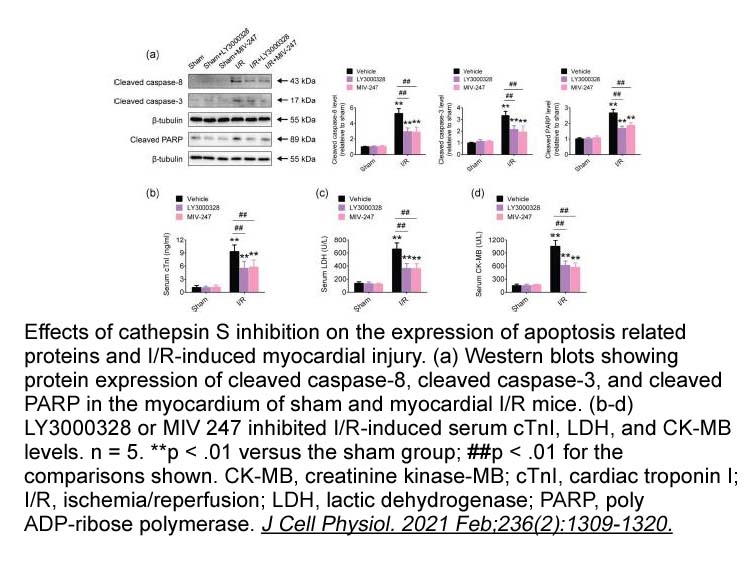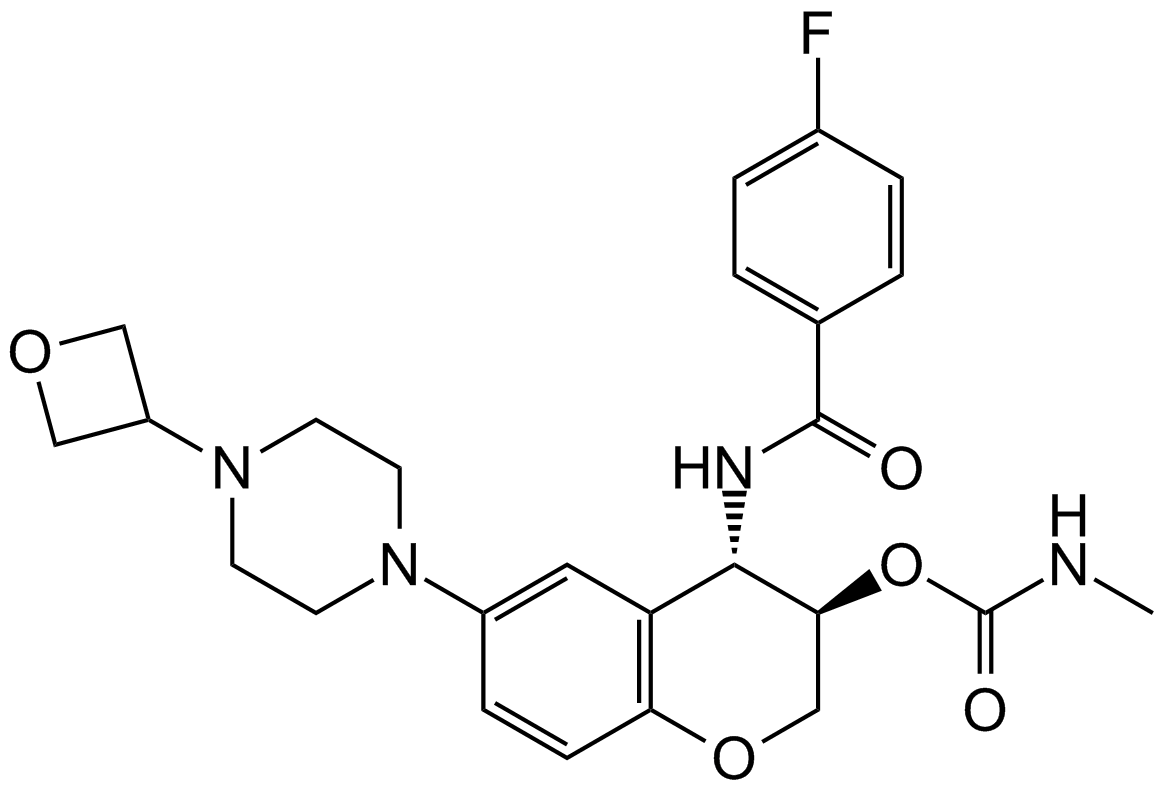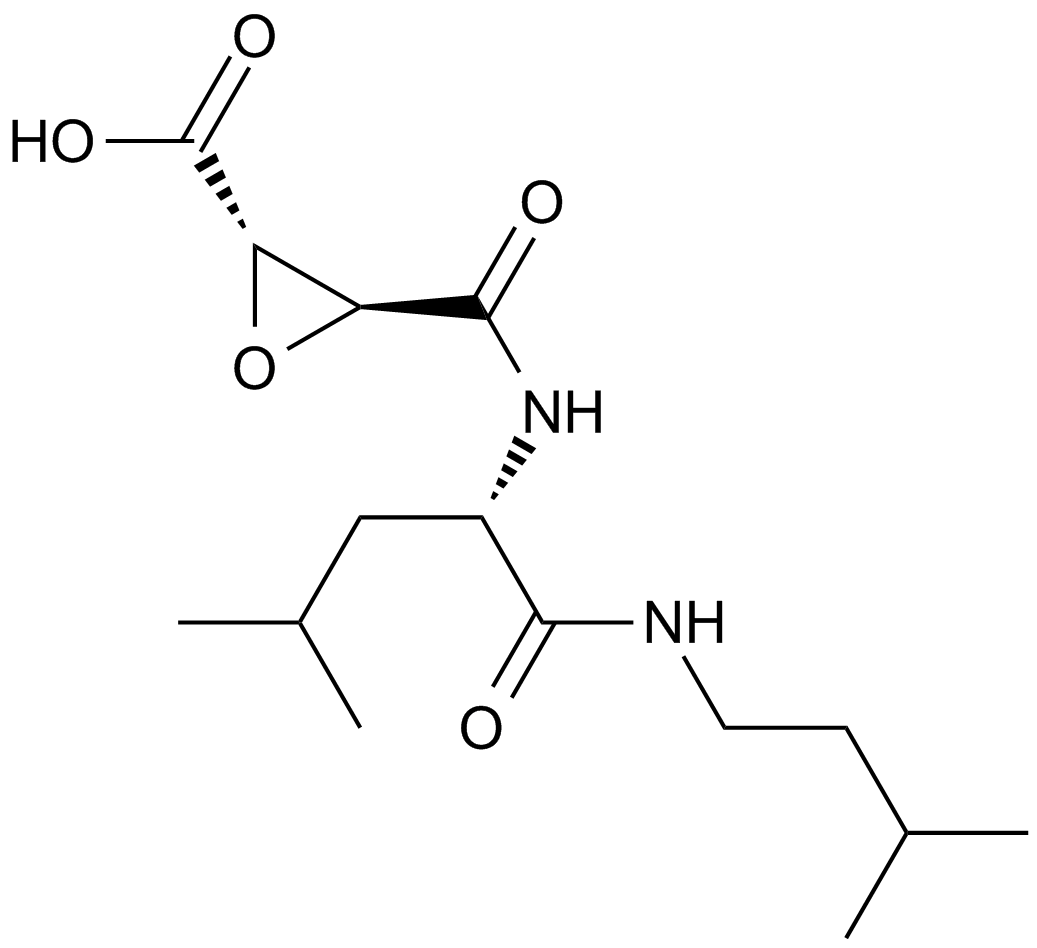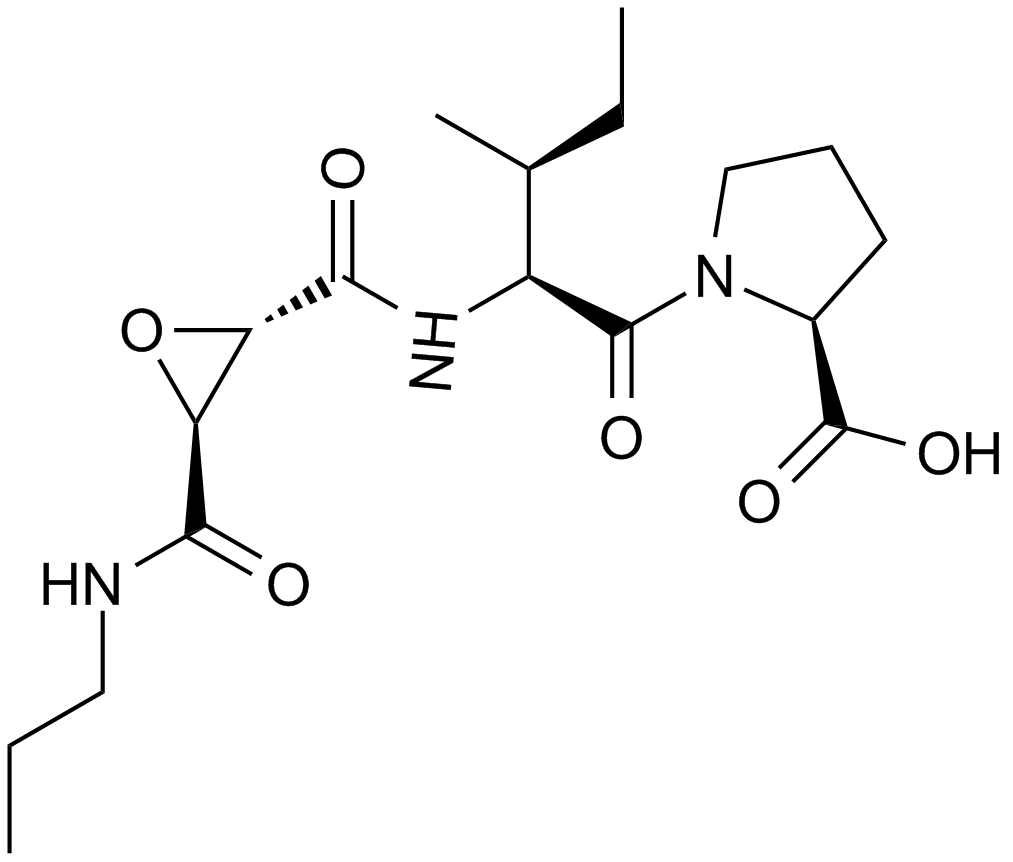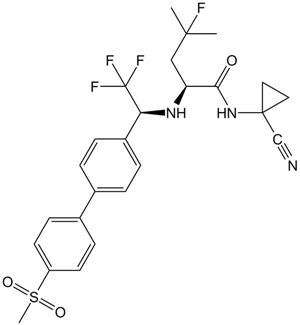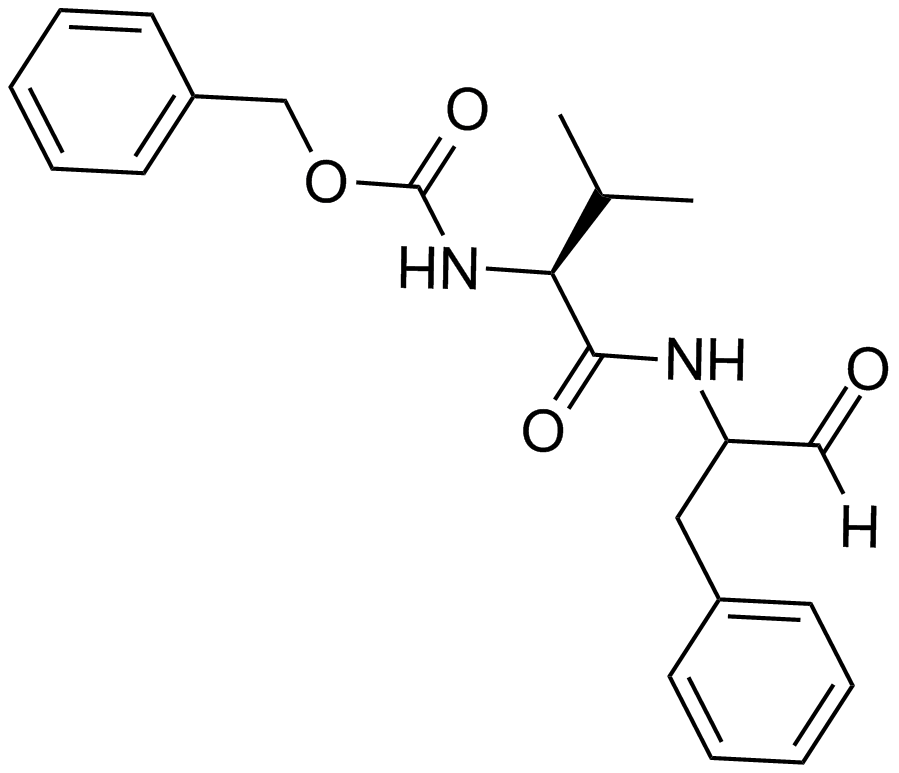Cathepsin S inhibitor
Ki: 0.185 nM
Cathepsin S is a lysosomal cysteine protease, playing an important role in antigen presentation. The inhibition of Cathepsin S is expected to result in immunosuppression, which makes this enzyme an attractive target to potentially treat autoimmune and inflammatory diseases. Cathepsin S inhibitor is a novel Cathepsin S inhibitor.
In vitro: Cathepsin S inhibitor was a slow, tight-binding reversible inhibitor of recombinant cathepsin S, exhibiting greater selectivity for cathepsin S compared to cathepsin B [1].
In vivo: No animal in vivo data available currently
Clinical trial: Oral Cathepsin S inhibitor that blocked MHCII antigen presentation could result in a T-cell-selective immunosuppressant agent with improved safety over the current standard of care for the treatment of rheumatoid arthritis, psoriasis, multiple sclerosis and other autoimmune-based inflammatory diseases [2].
References:
[1] Wiener JJ, Sun S, Thurmond RL. Recent advances in the design of cathepsin S inhibitors. Curr Top Med Chem. 2010;10(7):717-32.
[2] Lee-Dutra A, Wiener DK, Sun S. Cathepsin S inhibitors: 2004-2010. Expert Opin Ther Pat. 2011;21(3):311-37.
- 1. Ke Peng, Hong Liu, et al. "Inhibition of cathepsin S attenuates myocardial ischemia/reperfusion injury by suppressing inflammation and apoptosis." J Cell Physiol. 2020;1–12. PMID:32657442
- 2. Steimle A, Gronbach K, et al. "Symbiotic gut commensal bacteria act as host cathepsin S activity regulators." J Autoimmun. 2016 Jul 30. PMID:27484364
| Storage | Store at -20°C |
| M.Wt | 484.52 |
| Cas No. | 1373215-15-6 |
| Formula | C25H29FN4O5 |
| Solubility | ≥24.25 mg/mL in DMSO; insoluble in H2O; insoluble in EtOH |
| Chemical Name | [(3R,4S)-4-[(4-fluorobenzoyl)amino]-6-[4-(oxetan-3-yl)piperazin-1-yl]-3,4-dihydro-2H-chromen-3-yl] N-methylcarbamate |
| SDF | Download SDF |
| Canonical SMILES | CNC(=O)OC1COC2=C(C1NC(=O)C3=CC=C(C=C3)F)C=C(C=C2)N4CCN(CC4)C5COC5 |
| Shipping Condition | Small Molecules with Blue Ice, Modified Nucleotides with Dry Ice. |
| General tips | We do not recommend long-term storage for the solution, please use it up soon. |
| Kinase experiment [1]: | |
|
Kinase assays |
Assays were performed for Cat S, mCat S, Cat B and Cat L by adding enzyme to a concentration of FRET substrate equal to the Km in a 50 mM sodium phosphate buffer (pH 6.5) containing 2.5 mM DTT, 2.5 mM EDTA plus 0.01% Triton X-100. The Cat V and Cat K assays were performed as above, but in a 0.1 M sodium acetate (pH 5.5) buffer containing 2.5 mM DTT, 2.5 mM EDTA plus 0.01% Triton X-100. Km values for the FRET substrate were 25 μM, 25 μM, 20 μM, 37.5 μM, 35 μM, 35 μM and 25 μM for human Cat S, mouse Cat S, human Cat L, human Cat B, human Cat K, human Cat V and human Cat F respectively. |
| Animal experiment [1]: | |
|
Animal models |
Mouse model of abdominal aortic aneurysm (AAA) |
|
Dosage form |
1, 3, 10, and 30 mg/kg, oral, BID dosing |
|
Application |
The efficacies of Cathepsin S inhibitor was studied in a mouse model of abdominal aortic aneurysm (AAA). Cathepsin S inhibitor exhibited a dose-responsive aortic diameter reduction at 1, 3, 10, and 30 mg/kg. At the lowest dose of 1 mg/kg of Cathepsin S inhibitor, the aortic diameter is reduced by 58%, then 83% at 3 mg/kg, and 87% at 10 mg/kg. |
|
Other notes |
Please test the solubility of all compounds indoor, and the actual solubility may slightly differ with the theoretical value. This is caused by an experimental system error and it is normal. |
|
References: [1] Jadhav PK, et al. Discovery of Cathepsin S Inhibitor LY3000328 for the Treatment of Abdominal Aortic Aneurysm. ACS Med Chem Lett. 2014 Aug 27;5(10):1138-42. |
|
| A slow, tight-binding reversible inhibitor of recombinant cathepsin S (Ki = 185 pM). Exhibits about 410-fold greater selectivity for cathepsin S compared to cathepsin B (Ki = 76 nM). | ||||||
| Targets | cathepsin S | |||||
| Ki | 185pM | |||||
Quality Control & MSDS
- View current batch:
Chemical structure
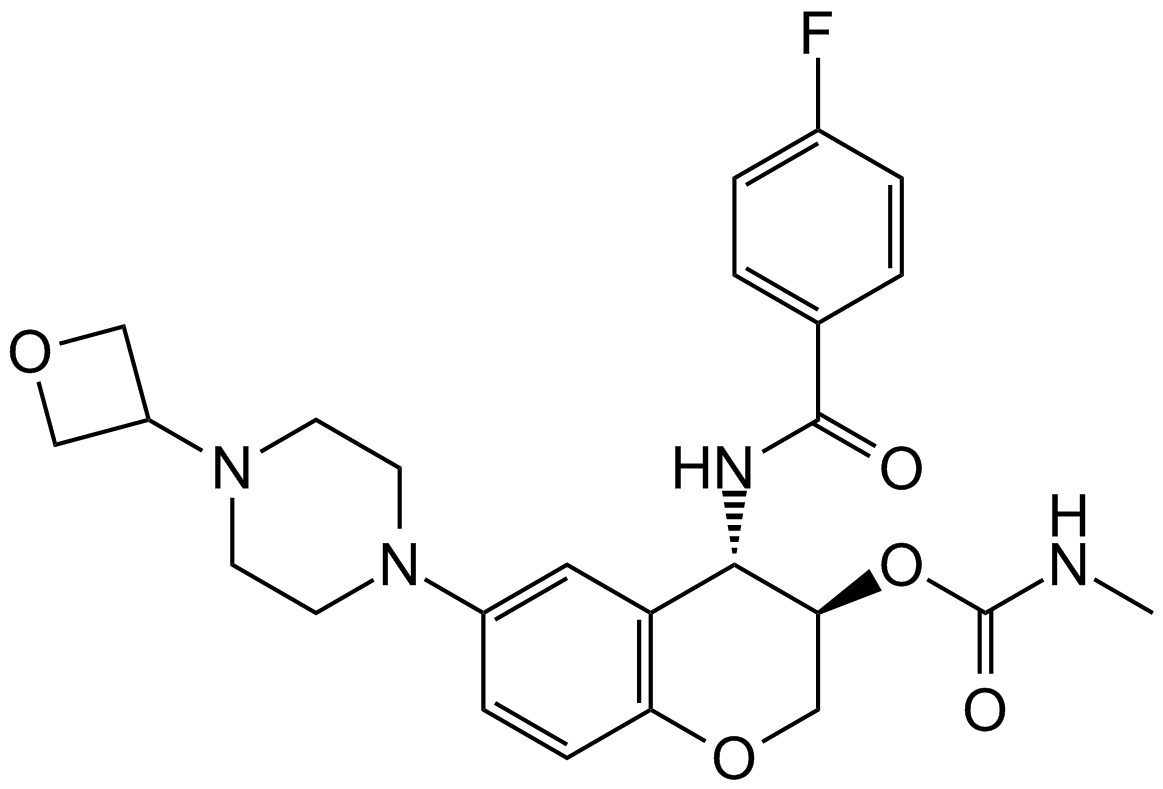
Related Biological Data
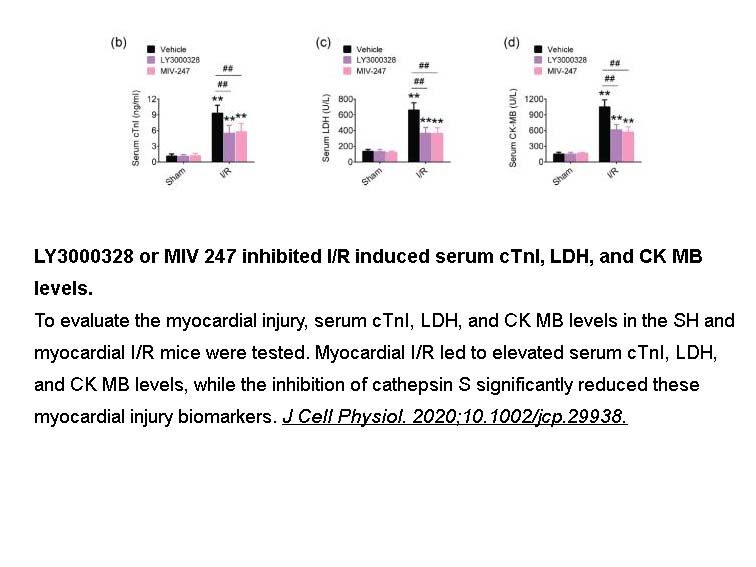
Related Biological Data
